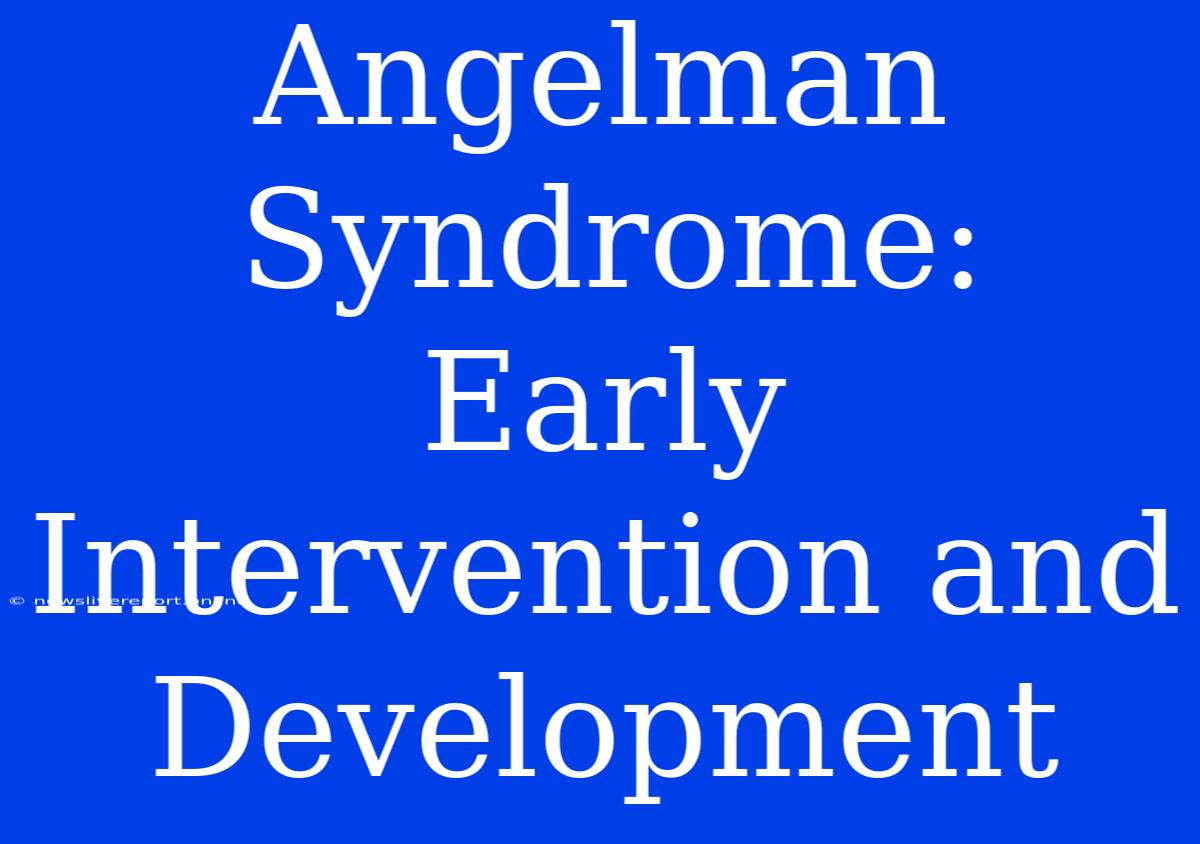Angelman Syndrome: Early Intervention and Development - A Guide for Parents and Caregivers
Angelman Syndrome (AS) is a rare genetic disorder that affects a child's development. Children with AS often experience developmental delays, intellectual disabilities, and unique behavioral characteristics. While there is no cure for AS, early intervention can significantly improve a child's quality of life and potential. This article will explore the importance of early intervention, discuss common developmental challenges faced by children with AS, and highlight strategies for supporting their growth and development.
Understanding Angelman Syndrome
Angelman Syndrome is caused by a genetic defect on chromosome 15, affecting the production of a vital protein called UBE3A. This protein plays a crucial role in the development and function of the nervous system. While the exact cause of AS is complex, it often results in a range of challenges, including:
- Developmental delays: Children with AS typically have significant delays in motor skills, speech and language development, and cognitive abilities.
- Intellectual disability: The severity of intellectual disability can vary greatly among individuals with AS. Some may exhibit mild intellectual disabilities, while others may have more significant cognitive challenges.
- Characteristic behaviors: Individuals with AS often display a happy, excitable demeanor with frequent laughter and smiling. They also tend to have a fascination with water and a strong attraction to spinning objects. Other common behaviors include hyperactivity, short attention span, and sleep disturbances.
The Power of Early Intervention
Early intervention is crucial for children with AS, as it can make a significant difference in their development and quality of life. By starting intervention programs early, parents and caregivers can:
- Maximize developmental potential: Early intervention can help children with AS learn new skills and develop their abilities to the fullest. This includes improving motor skills, language development, and social skills.
- Reduce behavioral challenges: Early intervention programs often address behavioral concerns, such as hyperactivity, impulsivity, and sleep difficulties, through tailored strategies and therapies.
- Enhance communication and interaction: Early intervention can help children with AS communicate more effectively and build social connections with others.
Key Areas of Intervention
Early intervention programs for children with AS typically focus on these key areas:
1. Physical therapy: Physical therapy helps children with AS improve their motor skills, balance, and coordination. This may involve exercises to strengthen muscles, improve gross motor skills like walking and running, and refine fine motor skills like grasping and manipulating objects.
2. Occupational therapy: Occupational therapy helps children with AS develop daily living skills, such as dressing, eating, and hygiene. It also focuses on improving fine motor skills and hand-eye coordination.
3. Speech therapy: Speech therapy addresses speech and language delays, helping children with AS communicate effectively. This may involve teaching sign language, improving articulation, and developing vocabulary.
4. Behavioral therapy: Behavioral therapy helps address behavioral challenges like hyperactivity, tantrums, and sleep problems. Therapists use evidence-based strategies, such as positive reinforcement and shaping, to modify behavior and teach coping skills.
5. Special education: Children with AS often benefit from individualized educational programs tailored to their specific needs. These programs may include specialized instruction, adapted materials, and supportive environments that cater to their learning styles.
Supporting Development at Home
Parents and caregivers can play a vital role in supporting the development of children with AS. Here are some practical tips:
- Create a stimulating environment: Provide a safe and stimulating environment that encourages exploration and learning. This may include age-appropriate toys, books, and activities that engage their senses.
- Establish routines and structure: Consistent routines can help children with AS feel safe and secure, reducing anxiety and promoting predictable behavior.
- Use positive reinforcement: Reward desired behaviors with praise, affection, and other positive reinforcement techniques. This encourages positive behaviors and minimizes reliance on punishment.
- Engage in play-based learning: Play is a powerful tool for learning and development. Engage your child in age-appropriate games, puzzles, and activities that encourage their cognitive and social growth.
- Seek support from other families: Connecting with other families who have children with AS can provide valuable support, guidance, and a sense of community.
Looking Towards the Future
While Angelman Syndrome presents unique challenges, early intervention can significantly enhance a child's development and quality of life. By working with a team of healthcare professionals and providing consistent support and love, parents and caregivers can help their child reach their full potential.
Remember, every child with Angelman Syndrome is unique, and their needs and development will vary. It's essential to work closely with healthcare professionals to develop a personalized intervention plan that addresses your child's specific needs and goals.
This article aims to provide a general overview of Angelman Syndrome and early intervention. For more comprehensive information and resources, consult with a healthcare professional specializing in developmental disabilities.

